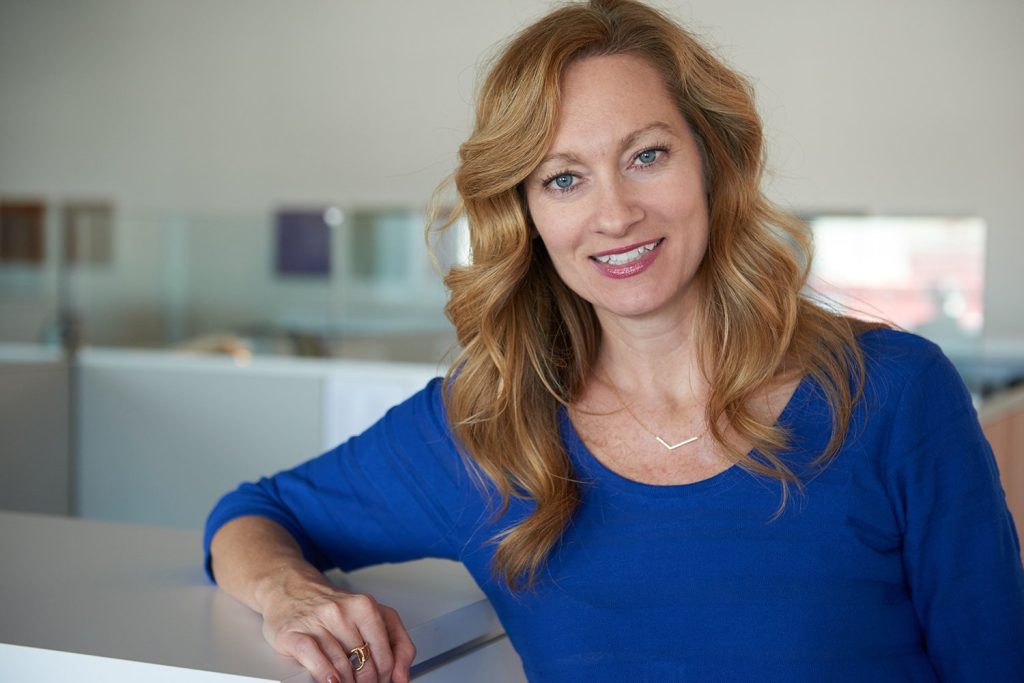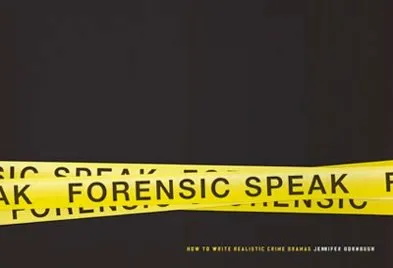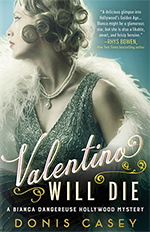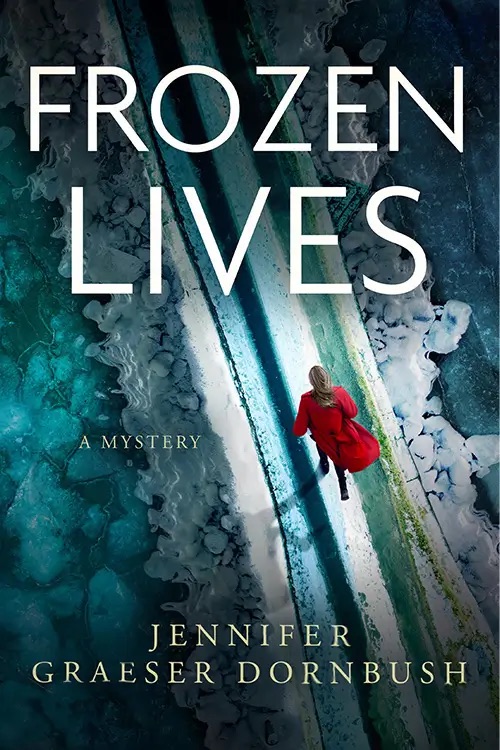
My Tell Me Your Story guest for October is someone with whom every mystery writer and reader should be familiar! Jennifer Dornbush is a screenwriter, author, international speaker, and forensic specialist. Raised as the daughter of a medical examiner whose office was in their home; forensics and crime writing are infused into her DNA. As an author, Jennifer penned suspense thriller Hole in the Woods; optioned for TV. The Coroner’s Daughter mystery series, being developed for TV. Jennifer is penning the episode scripts. Her historical procedure novel, The Locard Principle; and her true crime memoir, Raised By The Ice Man are currently being shopped. She has also created the acclaimed crime writer’s guide Forensic Speak. As a screenwriter Jennifer has optioned, sold, developed, and adapted material for film and television in multiple genres. She is a sought-out international teacher, speaker, and mentor. Join Jennifer’s newsletter to get your forensic freebie at: www.jenniferdornbush.com
Follow her on Instagram @jgdornbush
I Grew Up Around the Dead
by Jennifer Graeser Dornbush
My childhood in northern Michigan was completely unconventional and contributed 100% to my storytelling today. I grew up around the dead and learned forensic science from the early age of eight. This was because my father served as a Medical Examiner for 23 years. Since our rural county didn’t have the money for an M.E. office, dad set it up in our house.
During the years dad worked as M.E., I had a hands-on education in death investigation. It was as natural as brushing my teeth. Around the family dinner table dad would recall the latest case. Samples of blood and body tissue were stored in a basement freezer, right under the pork chops and frozen beans. He used our family Suburban (Old Blue) to transport bodies from the scene to the morgue. There were always spare body bags under the bench seat and an investigation kit stored in the back. Dad performed autopsies at the small county hospital morgue, but all the records, paperwork, and photographs were kept at home, often in plain sight on the kitchen table.
Growing up, when people would ask me what my dad did, I was mortified to tell them. Our society as a whole back in the 1980s didn’t really know what a Medical Examiner did or what an autopsy was. Nowadays, we all seem interested in forensics, crime, and police investigation. But back then, before CSI made it popular, no one paid much attention. I found it hard to explain to others that my dad cut people up to look at their insides and find out why they died. It’s an odd profession and I was worried that they would judge me and my family.
After college, I pursued work in marketing, journalism, and teaching. But my true love was writing and I pivoted to screenwriting in the early 2Ks. While I was trying to figure out what kind of stories I wanted to tell, all the scenarios and weird experiences from my forensic childhood bubbled to the surface. Until then, I had not thought to transfer my childhood into my writing; but I soon realized I had a treasure trove to work from. I found I loved the crime genre and that intrinsically had a lot of knowledge about forensics and investigation.
A few years into my writing career, I decided to go back to school to learn how to speak forensics better by rounding out my knowledge of criminal investigation. I attended the Forensic Science Academy in Los Angeles. This was a fabulous program (and still is) where I met outstanding professionals who work in the criminalistics. Many are still my friends years later. And while I may write about fictional investigators, these are the real heroes of our society.
When I was telling my TV writer friends about my courses in the academy, they said that they wished they could go through it. I thought, well, why not put the academy in book form for them? That inspired me to create a book for them called Forensic Speak, which is basically a forensic bootcamp. It was quickly snatched up and published by MWP Press, a small but mighty press who caters to providing academic materials to content creators working in film and TV. To my surprise, Forensic Speak found its way into the hands of law enforcement professionals and universities, too.

Forensic Speak opened the door for me to teach and consult with other story creators who want to make their stories sound more authentic. I strive to do so in my own writing as well. For instance, when I was writing my last book, I texted a friend in Wisconsin who works as a coroner’s investigator. I wanted to know if there is a “pet name” that investigators use when they find people who have died of drug overdoses. Kind of like how drowning victims are called “floaters.” Unfortunately, she wasn’t aware of such a pet name. She said they call them OD’s or Overdose Deaths. I told her that seemed pretty boring. She laughed. Sometimes truth is just… well, not as exciting as fiction.
I’m often asked if there are forensic or investigative things depicted on screen that just wouldn’t happen in real life forensics. Of course, there are! We’re writing fiction for Pete’s sake! For example, when investigators come into a crime scene and put together a fully fledge theory and cause of death in thirty seconds. Nope. Not realistic. It’s going to take days, weeks, sometimes months to gather information in a criminal investigation.
Another commonly used on-screen forensic misconception is how a toxicologist will run a complete drug screen on a sample to find the offending drug. Nope, that doesn’t happen in real life. Toxicologists will only run a generic panel of about 6-8 commonly used street drugs (heroine, codeine, morphine, cocaine, opiates) unless there is suspicion or knowledge that another drugged was involved and the investigator requests a particular drug screen. Why? Because there are hundreds, if not thousands of drugs out there in the world. You can’t test for all of them. It’s too timely and expensive.
People always want to know, “What books or TV shows get forensics right?” Generally, I think most writers do a fairly good job of this. It’s easier in some ways to get forensics “right” in novels because authors have the advantage of time and the luxury of 300 plus page book. Screen stories, however, are truncated forms of storytelling. Each script page is equivalent to one minute of screen time. You have to push time on screen. In real life a homicide investigation could takes months or years. On screen, you get about 45 minutes an episode to solve the crime.
I think there are a good number of shows that speak forensic investigation and the criminal world pretty well. Mindhunter, The Americans, Homeland, Hawaii 5-0, NYPD, The Good Wife, House, Law & Order, NCIS, Cold Case, Dexter, True Detective, Top of the Lake, Broadchurch. I’m sure there are more, but those come to mind.
Final word… delving into the crime world day after day can be daunting and depressing if you let it get the best of you. I try to stay focused on my personal vision which is to bring hope and light into the dark recesses of the human experience… because, as this coroner’s daughter understands more than most, life is short and the only thing that lasts after we’re gone is the love we show to those around us who need it most.

Jennifer’s newest book, Frozen Lives, releases with Blackstone Publishing October 29. This is book four in her Coroner’s Daughter series. It can be read as a stand-alone, but to get the full experience of Dr. Emily Hartford’s journey, you won’t regret starting at the beginning with The Coroner.
FROZEN LIVES: Chicago surgeon Emily Hartford finds herself pulled back upstate during a wintery late March when Jeremiah, the eleven-year-old son of her best friend, Jo, goes missing on the frigid shores of Lake Michigan. After a harrowing search Jeremiah is recovered, but it turns out, his return is far from the end of the terrifying tale. Moving among them is a devious, malevolent force. Sowing panic and leaving a trail of bodies in his wake. Emily solidifies her role as coroner’s daughter when she puzzles out this madman’s chilling machinations and going the icy distance to end his killing spree.
Catch Up With Jennifer Graeser Dornbush:
www.JenniferDornbush.com
Goodreads
BookBub – @jgdornbush1
Instagram – @jgdornbush
YouTube – @ForensicSpeakJenniferDornbush
Facebook – @JGDornbush





More Places to Go
Donis on Facebook
Type M for Murder